| Umělec magazine 2005/1 >> Birth and Resurgence of Czech Modernism | List of all editions. | ||||||||||||
|
|||||||||||||
Birth and Resurgence of Czech ModernismUmělec magazine 2005/101.01.2005 Zuzana Štefková | review | en cs |
|||||||||||||
|
Martina Pachmanová’s Unknown Areas of Czech Modern Art: Examined from the Gender Perspective, published in Czech by Argo press, is unique among Czech art history publications. Czech Modernism, the subject of the book, is definitely not among the unexplored chapters of Czech art. Nevertheless, the book proves that previous scholarship has left blank spaces on the imaginary map of this region.
A key role, in the intended rectification of their omissions, is played by the perspective of gender. However, that can not be reduced to the gender of the author or the female artists who managed to get into the book. Our attention is, in fact, aimed at the gender of the "modernist project" itself and the gender of art history. In Bohemia, as Mirek Vodrážka states in the book’s preface, "history drags like stepped-on chewing gum." Martina Pachmanová explains the existence of an "unknown" dimension in Czech Modernism as a consequence of selective memory and a rigid approach to art that is weighed down by traditionalism, the metaphysics of the canon and chronological dictate. The author wants only to discover such history of art that would allow "expressing the past in terms of the present" and offers a view of history as a discontinuing and open system. Her interpretation of the Czech Modernists successfully avoids the traps laid by prescriptive critique as she subjects the period of study to concepts of originality, revolutionary qualities, canon and beauty. On the other hand, she won't sink into the mire of boundless relativism either. The attempt at "different writing" is motivated by the demand for a pluralistic attitude that would show the active role of women in the story of fine art, and would not place them outside the concept of modernity as mere objects of male creative imagination, or as hopelessly unoriginal and irrational—apparently anti-modern beings. The author points out the paradoxical fact that it was precisely in the period of modernism that, for the first time in history, women received art education and, in the case of Czechoslovakia, political equality as well. At that time the progressive "new woman" appeared, a figure that can be characterized as an "exclusively masculine business." The belief in the inherently conservative nature of women was supported by the presumed antagonism of the female element and the avant-garde cultural milieu. At the same time, avant-garde intellectuals were trying to erase any differences (including those of gender) for a future progressive society. For such reasons, the author did not have much space for independent maneuvering. The author wants neither to create a "myth of feminist modernity," nor to “pillory those male artists whose imagery is associated with the female body," or even to "condemn modernism as a cut-and-dried misogynist project," but to outline complicated and often ambivalent relations between art and gender. The form of the book itself is consistent with the intentional denial of any "big narrative" by the author as well as an interest in heterogeneity of modern art. Each of the five chapters functions independently. The deliberately fragmentary structure of the book implies that the texts were produced according to varied impulses. However, it is because of this diversity that it vividly expresses diverse ways of posing the question of gender within the discourse of modernity. In the chapter "Woman's Work” in the Age of Man, Pachmanová selected texts by theorists and artists active at the beginning of the 20th century, documenting ways that modernity was constructed as an age of "masculinity and heroism," denying the intimate, the emotional and the domestic. At the same time, the author pays attention to the relation between what is considered high and low art, from which the degradation of female art emerged. On the other hand, she also describes the self-confident artistic strategies of women (mainly from the Artěl group) reacting to the too-narrow and gender-conditioned scope of production. The subchapter "Semantic Acrobatics” in Decorativeness deals with the unacknowledged connection between decoration, regarded as a traditional female domain, and abstraction, the purest achievement of (male) modernity; the diametrically opposing evaluations of each are assessed. Finally, in the subchapter The Stolen Reform: Functionalism and Cultivation of "Feminity," Pachmanová comments on the contradiction between the proclaimed liberation of women and the fact that this liberation was carried out according to a male script and, in most cases, remained restricted to the traditionally female sphere – the household. The chapter Developmental Deviations of Modernism: the Paradigm of Woman deals with female art associations' activities (especially The Female Fine Artists Circle) and the relation between the gender of the artists and their tendency toward "new realisms," often of different, post-French orientations. Here, the author argues with the image of the story of art as a Darwinist struggle leading to the (final) victory of a "higher" avant-garde art. She notes that this is not just with women: artists of German and Jewish origin living in Bohemia found themselves left out — outside the modernist canon. For some German or Jewish female artists that was double jeopardy. Pachmanová stresses that the interpretation of "female art," and its exclusion from the building of the modernist project, was conditioned by the scope in which such art was understood as marked by conformity, inferred and intuitively emotional (in contrast to rationally based male art), thus influenced by the natural disposition of females. She is more interested in the deconstruction of such a scope than in discovering "genius" female artists. Nevertheless, this part deals with some artists whose work supassed the period’s “average” (both male and female), such as Milada Marešová, Vlasta Vostřebalová-Fischerová, Hella Gutová, and Zdenka Burghauserová. Similarly, the chapter Collective Desires: Czech Inter-War Avant-Garde Architecture and Building of "Super-sexual" Space does not follow the production of Czech female architects, but focuses on analysis of the gender-conditioned division of space into public (male) and private (female). At the same time, Pachmanová points out how the extreme demands on the reduction of private space (made by avant-garde architects and architecture theorists, personified primarily by Karel Teige) formed the architectonic space as a tool of gender-specific control. The Chapter entitled Gender Problems: I Is Someone Else could, from the methodology point of view, be the most traditional as it follows the work of one particularly outstanding artistic personality: Maria Čermínová a.k.a. Toyen. Nevertheless, even here we are not dealing with classical monographic composition. Pachmanová is interested in Toyen because of her shifting gender and sexual identity, which she understands as a way to destabilize the traditional division into male and female genders. The author refuses to explain Toyen's cross-dressing either as male auto stylization, or the concept of androgynous fusion of sexes. Combining the approaches of structuralism, psychoanalysis and surrealism, she propagates a concept of shifting identity that overcomes the binary categories of male or female. The last subject dealt with in the chapter "Genius Mother Tongue:” to the Masculinity Construction in Czech Modern Art is based on the premise that the concepts of femininity and maternity influence the interpretation of male identity retrospectively. The gender ambivalence that appears in the formulation of the term "genius" in the texts of modernist theorists (F. X. Šalda, above all) prove that even this purely masculine modernist concept had been "contaminated" by the image of maternity as something suppressed. Readers anticipating discovering undervalued "big names" among modern Czech female artists might be disappointed. The author is clearly disinclined to rewrite history in favor of women. They would not fit into her perspective anyway. Since she was neither interested in producing a traditional research catalog nor in working with inventories, (together with a low budget), the number of reproductions was limited. Regardless, this is a really inspiring book. It not only introduces missing segments to the image of Czech Modernity, it also inquires into the meaning and values of the art history that created it.
01.01.2005
Recommended articles
|
|||||||||||||
|
04.02.2020 10:17
Letošní 50. ročník Art Basel přilákal celkem 93 000 návštěvníků a sběratelů z 80 zemí světa. 290 prémiových galerií představilo umělecká díla od počátku 20. století až po současnost. Hlavní sektor přehlídky, tradičně v prvním patře výstavního prostoru, představil 232 předních galerií z celého světa nabízející umění nejvyšší kvality. Veletrh ukázal vzestupný trend prodeje prostřednictvím galerií jak soukromým sbírkám, tak i institucím. Kromě hlavního veletrhu stály za návštěvu i ty přidružené: Volta, Liste a Photo Basel, k tomu doprovodné programy a výstavy v místních institucích, které kvalitou daleko přesahují hranice města tj. Kunsthalle Basel, Kunstmuseum, Tinguely muzeum nebo Fondation Beyeler.
|







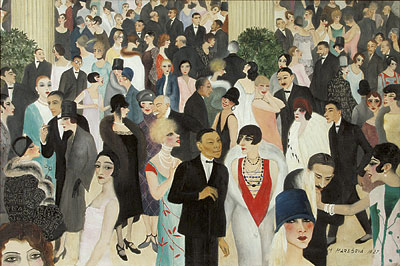




















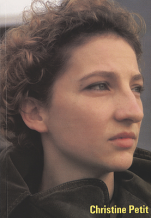
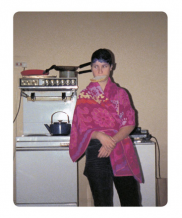
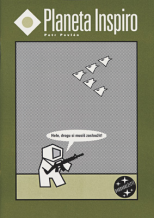
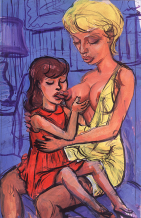


 New book by I.M.Jirous in English at our online bookshop.
New book by I.M.Jirous in English at our online bookshop.
Comments
There are currently no comments.Add new comment